Umberto Crenca on Building AS220: Be persistent in selling your vision
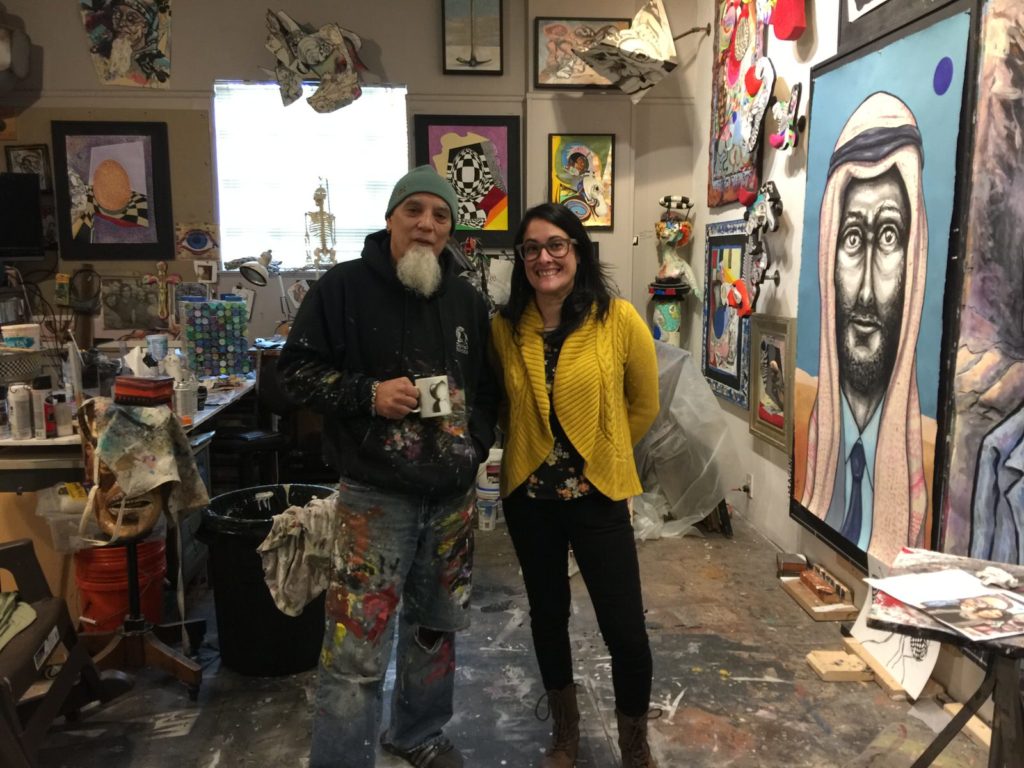
Jessica Bregoli and Umberto Crenca in his studio.
I think I met Umberto Crenca at precisely the right time. Timing is everything, as is having the wherewithal to wake out of a daze and recognize an important connection or opportunity when it presents itself.
Our gallery director Jessica Bregoli recently happened upon an exhibition of Umberto Crenca’s work in Providence. She asked Crenca to show at Groundwork, not realizing that he was the founder of Providence’s AS220, a non-profit community arts organization credited for playing a big role in the revival of downtown Providence. Crenca agreed to the show along with Rhode Island artist William Schaff, and the connection was made.
This all happens as I slog towards the finish line of year four since starting Groundwork: I’m burnt out, frequently sick, and looking for a spark to propel things forward.
So Jess and I travel to Bert’s home and studio last week to have a conversation about building community and accomplishing impossibilities. He generously shares his story and a healthy helping of advice for anyone who aspires to build something bigger than him or herself. If that sounds like you, read on.
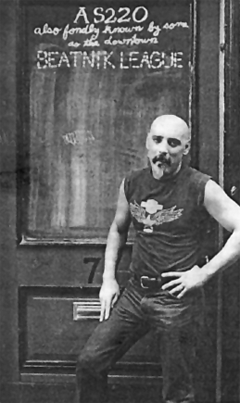
Umberto Crenca in 1989. Photo credit: AS220.org
How it all started
Bert starts by quizzing me about my story and why I started Groundwork. When I eventually manage to turn the tables, I ask about his talk at TEDx Providence. I had watched it to prepare for our conversation and was amazed to learn that the whole impetus for starting AS220 came from a bad review.
Even further back, Bert tells us that the initial concept of AS220 was influenced by time he spent as a 19-year-old at the Rubicon Coffee house on east side of Providence, which was run by a drug rehab program. It was a community outreach program and also functioned as a way for folks in recovery to work in the community. They had a music program during the night. The whole thing was very people-centric, about inspiring and empowering the individual. At the time, Bert shares, he was dark and depressed. It left an impression on him.
At 35, Bert goes through a divorce. Although it is mostly amicable, it is wrenching, as most serious separations are. He decides to have his coming out party as an artist, and does a solo show at a gallery on Steeple St. He tells us that every day he looks in the paper, expecting a review. One day there is one. And it is not good.
“I’m collecting unemployment for the first time in my whole life. And I’m pinning the whole thing on me being an artist. So this was a scary time to get that review.
Steve Emma, a poet, writes an op-ed criticizing review. Because of the dialogue in paper, people come to the show. Steve and I get to know each other, and we end up meeting at my house.”
The meetings culminate in the writing of a manifesto, published originally in 1982 in the Providence Eagle and signed by Steve Emma, Martha Dempster, and Umberto Crenca. A critical paragraph reads:
We challenge the pervasive notion that complete, unbridled, uncensored freedom produces mediocrity and that excellence rises out of repression. It does not! Art is stifled and stagnates under repression whether that repression is overtly political or covertly economic, hence the historical exodus of artists and others from repressive states to those more conducive to the free expression of ideas. The relegating of an artist to an arbitrary position of insignificance, anonymity, or poverty by any group is a form of repression and must be challenged.
You can read the full text (and I highly recommend that you do) on the AS220 website.
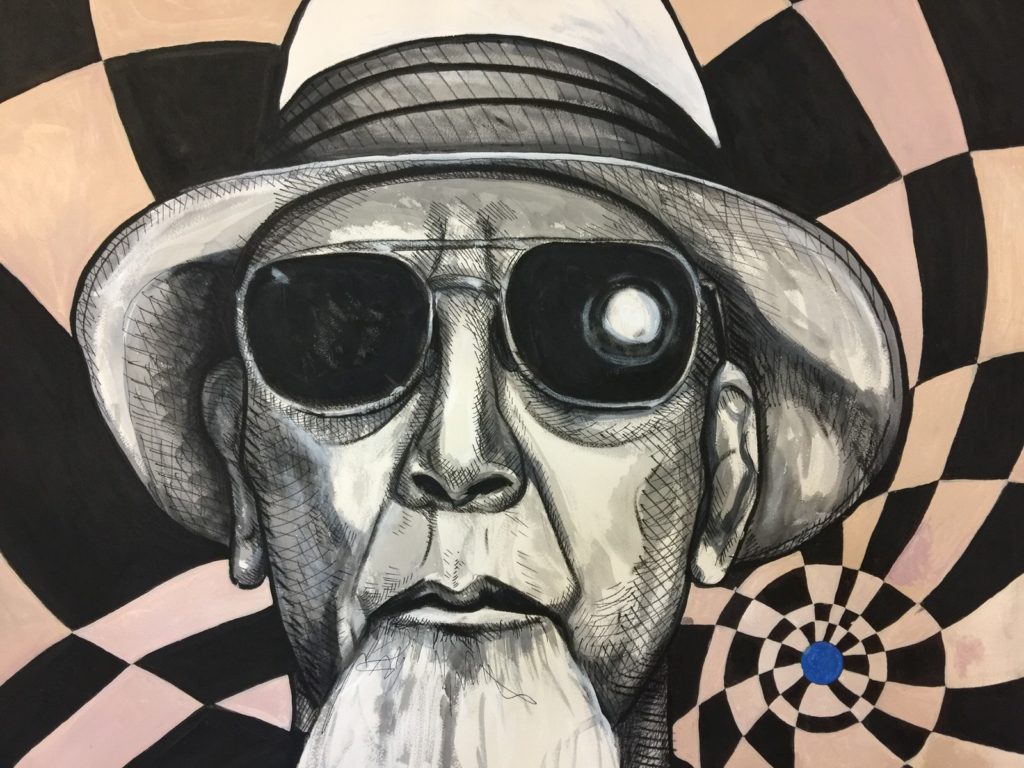
“Types Bert” currently on display at the Groundwork gallery
Building AS220
The manifesto results in an un-juried and uncensored art exhibit. After that, Bert leaves to do an artist residency in New York, and spends three months traveling Europe. Both experiences deepen his perspective and practice as an artist.
Burt returns to Providence and watches his artist friends go to Boston or New York, only to return a few weeks or months later. His voice raises with enthusiasm as he recounts the story:
“So I’m like, Why go there? Let’s just do it here. Let’s create our own scene. And in my mind, I’m thinking of Gertrude Stein’s soirees on the left bank of Paris. This is what I think art is– Picasso, Matisse, and Hemingway sitting around and shooting the shit and getting a little buzz. So the idea was to create a place where that was possible. Without trying to predict it, or predict outcomes.”
Bert takes his last $800 to start the first iteration of AS220, in an empty space above the Providence Performing Arts Center. Within weeks, there are raves, rock and roll, graffiti, chainsaws… the PPAC Board of Directors invites them to leave. Undeterred, they find a boarded-up building around the corner and start doing things illegally there.
At this point, Bert turns to me and says, “You know, Sarah, you’re courageous. You have the courage. And to a certain degree, naiveté and fearlessness, right? There’s a certain blend there.”
Yep, I know it all too well.
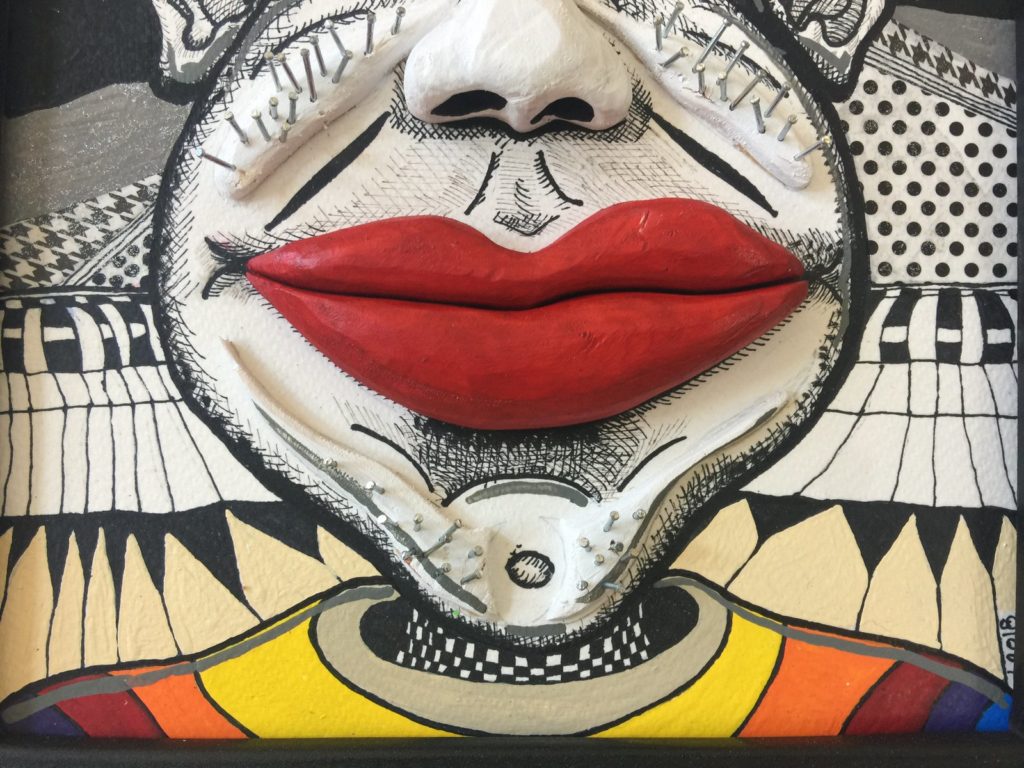
Detail of “Fever Dreams #21” currently at the GW gallery.
Accomplishing the Impossible
So, how does it all happen? How do a bunch of artists squatting in an abandoned building create a thriving multi-building arts campus with classes, workshops, exhibition spaces, a residential component, a restaurant, and more?
For one, there’s the timing. Bert explains that AS220 came along at a time when Providence was a boarded-up city desperate for vision. It helped that under the leadership of mayors Paolino and Cianci, rules were made to be broken.
Another component is persistence:
“What I can take credit for is showing up every day, learning what needed to be learned, assessing the next steps, and then making strategies and moves to make that happen.”
And then there’s this clue he learned from recovering addicts:
“First you act as if.
Then you think as if.
Then you feel as if.
And then you’re turning around, looking back and wondering how the heck you got there.”
But ultimately, at the heart of it all, Bert had a vision for an uncensored and un-juried art space. A place where anyone could do anything. And he sold that vision persistently.
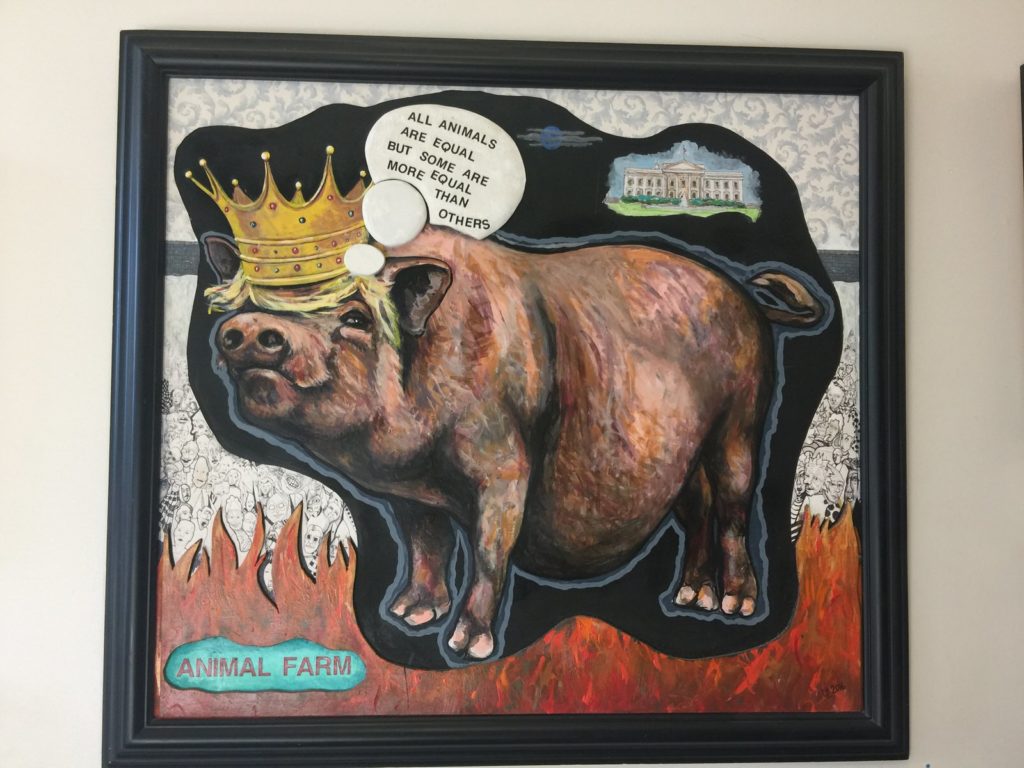
“Animal Farm,” currently at the GW gallery.
On leadership & Putting Vision into Practice
Bert recently passed the baton and stepped down as AS220’s Artistic Director. Now he gets to start his days in the studio. I ask how he did it– how do you get other people to care about something as much as you do?
For Bert, it’s about clearly defining your vision, your mission, and your core values– what is it that drives you? Once you have that codified, be persistent and clear in selling it:
“So every time I’m with a banker, or trying to get a mortgage, the first thing I put out is the un-juried and uncensored mission. So that they know EXACTLY what they’re buying into from day one. And I repeat it because they would forget . They don’t really care about that. But I insisted on it.”
These days at AS220, the staff goes through a whole exercise about mission, vision, policy, and practice. As Bert explains, you can have a wonderful mission, vision and values, and then somebody can call your organization and the person on the phone is an asshole. So where are your values? The day to day interactions with people, the practice, are where the rubber meets the road.
Of about 50 employees at AS220, everyone makes the same wage, from the directors to the lab technicians. When speaking about power, Bert explains that there are a few different kinds:
“One is you take it, by whatever means possible.
Some of it is assumed by pedigree- the right school.
And some of it is granted. You build confidence and trust in a community and they grant you that power.”
Bringing it all back home
Jess and I would like to sit in Bert’s kitchen and soak up wisdom bombs all day, but I’ve got afternoon duty at Groundwork. We thank him for his time, and he generously invites me to email him Groundwork’s vision, mission, and values for feedback.
On the way home, my mind is buzzing (mostly from cold meds, but also from excitement). Suddenly, the impossible feels possible again.
It’s amazing how the right encounter at the right time can set off a whole chain of events. We need each other’s stories to inspire us and to remind us what we truly care about. And for that to happen, we need to belong to communities.
That’s really what inspired me to start Groundwork four years ago. I had forgotten that.
The conversation continues! Join us to chat with Umberto Crenca and William Shaff Saturday, Dec 8th from 6-9pm. You need this too. More info >
- Meet Our General Manager: Nicole Cosme - February 26, 2024
- Can I use a coworking space for Google My Business? - April 26, 2023
- Marketing Lab: The Best Business Resource on the South Coast You Didn’t Know About - March 23, 2023
